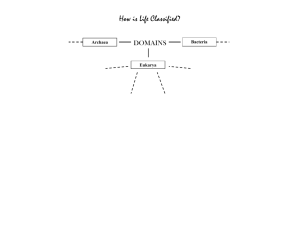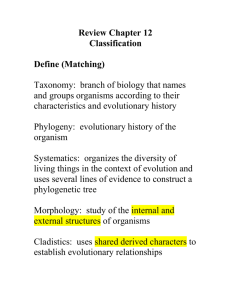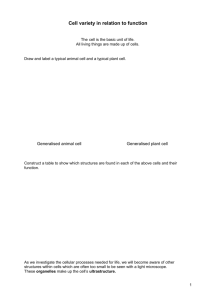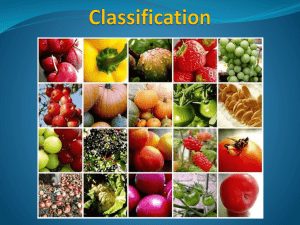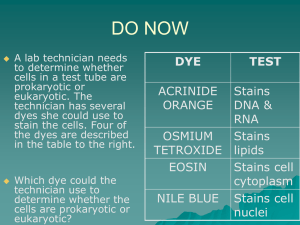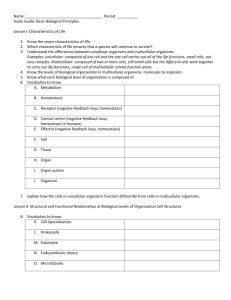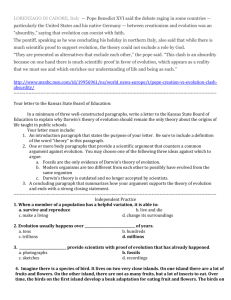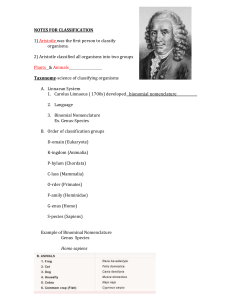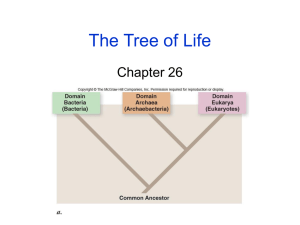Evolution of Life Practice
advertisement
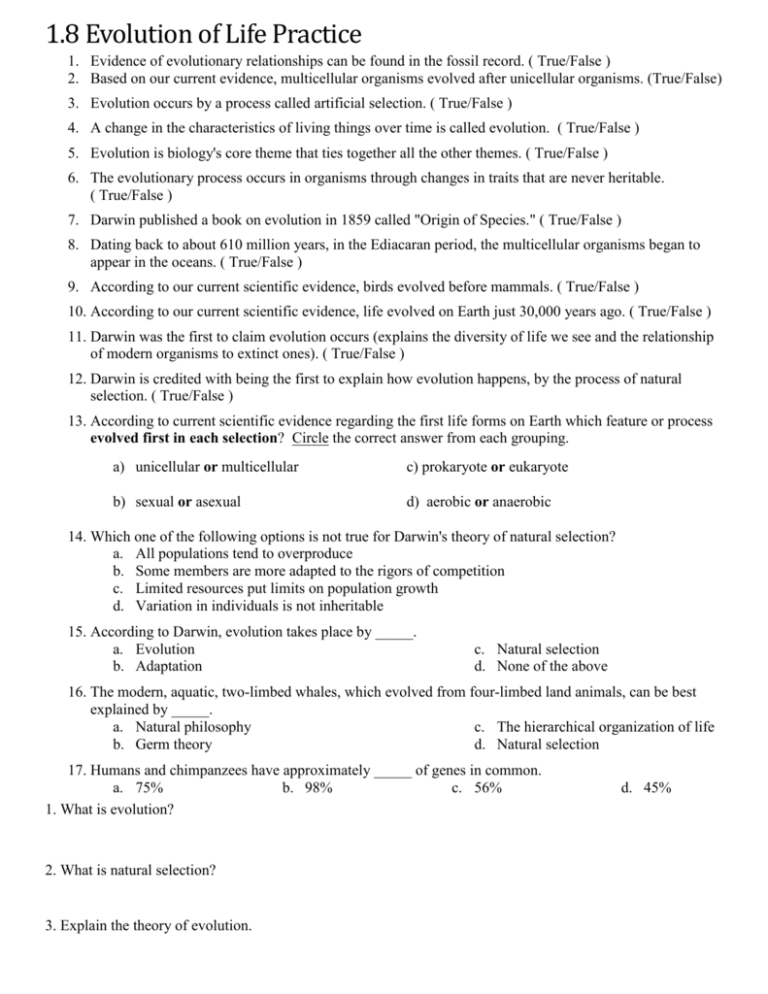
1.8 Evolution of Life Practice 1. Evidence of evolutionary relationships can be found in the fossil record. ( True/False ) 2. Based on our current evidence, multicellular organisms evolved after unicellular organisms. (True/False) 3. Evolution occurs by a process called artificial selection. ( True/False ) 4. A change in the characteristics of living things over time is called evolution. ( True/False ) 5. Evolution is biology's core theme that ties together all the other themes. ( True/False ) 6. The evolutionary process occurs in organisms through changes in traits that are never heritable. ( True/False ) 7. Darwin published a book on evolution in 1859 called "Origin of Species." ( True/False ) 8. Dating back to about 610 million years, in the Ediacaran period, the multicellular organisms began to appear in the oceans. ( True/False ) 9. According to our current scientific evidence, birds evolved before mammals. ( True/False ) 10. According to our current scientific evidence, life evolved on Earth just 30,000 years ago. ( True/False ) 11. Darwin was the first to claim evolution occurs (explains the diversity of life we see and the relationship of modern organisms to extinct ones). ( True/False ) 12. Darwin is credited with being the first to explain how evolution happens, by the process of natural selection. ( True/False ) 13. According to current scientific evidence regarding the first life forms on Earth which feature or process evolved first in each selection? Circle the correct answer from each grouping. a) unicellular or multicellular c) prokaryote or eukaryote b) sexual or asexual d) aerobic or anaerobic 14. Which one of the following options is not true for Darwin's theory of natural selection? a. All populations tend to overproduce b. Some members are more adapted to the rigors of competition c. Limited resources put limits on population growth d. Variation in individuals is not inheritable 15. According to Darwin, evolution takes place by _____. a. Evolution b. Adaptation c. Natural selection d. None of the above 16. The modern, aquatic, two-limbed whales, which evolved from four-limbed land animals, can be best explained by _____. a. Natural philosophy c. The hierarchical organization of life b. Germ theory d. Natural selection 17. Humans and chimpanzees have approximately _____ of genes in common. a. 75% b. 98% c. 56% 1. What is evolution? 2. What is natural selection? 3. Explain the theory of evolution. d. 45% Please place a check in the following boxes that apply to each organism category. Organism Category Prokaryote Eukaryote Earliest life form based on scientific evidence Contains membrane-bound organelles Has genetic information that it passes down to the next generation Evolves Is the smaller one Is more structurally complex Includes both unicellular and multicellular organisms All (or most!) are unicellular Is a form of life Has a nucleus (a type of membrane-bound organelle) Includes bacteria (Kingdoms Archaebacteria and Eubacteria) Includes plants (Kingdom Plantae) Includes animals (Kingdom Animalia) Includes fungi (Kingdom Fungi) Includes protists (Kingdom Protista) Label the following as a Eukaryote (E) or Prokaryote (P) or Neither (N) 1. Oak tree ______ 8. A cell with a nucleus______ 2. Cat______ 9. A kidney cell ______ 3. Stray dog______ 10. A skin cell______ 4. Owl______ 11. Photosynthetic bacteria _____ 5. Clown fish______ 12. Cell with membrane-bound organelles like mitochondria_____ 6. e. coli ______ 13. Flu virus______ 7. Bacteria______ 14. You ______
